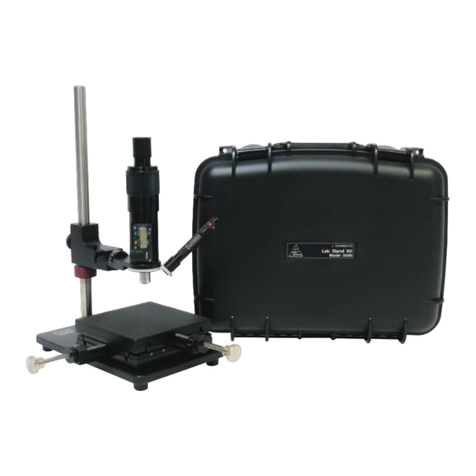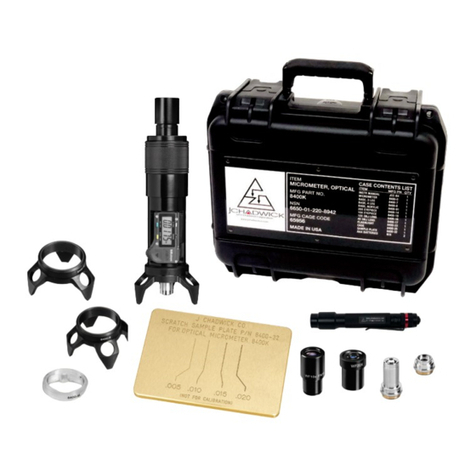
4
Part Number List
PART# ITEM
8600C All-In-One Optical Micrometer Kit
8600R All-In-One: Microset Add-On
8600CK All-In-One: 8600C Upgrade
8600-25 Case, 8600C All-In-One Kit
8400K Optical Micrometer Kit
8400-7 Base, 3-Leg
8400-71 Base, 3-Leg Soft Tip
8400-8 Base, 4-Le
8400-12 Base, 3-Leg Offset
8400-14 Eyepiece, 20X
8400-15 Eyepiece, 10X
8400-16 Objective, 10X
8400-17 Objective, 4X
8400-23 Flashlight
8400-25 Case, 8400K Optical Mictometer Kit
8400-27 Tall Tripod Base 4.5”
8400-32 Scratch Sample Plate
8400-35 Base, Corner
8400-91 Base, Acrylic V-Block
5500L Lab Stand Kit, w/ X-Y Stage
5500K Lab Stand Kit, no X-Y Stage
5500-50 X-Y Stage
4400M Surface Replication Kit
4400-1 Dispensing Gun, 50ml
4400-2RTG Microset®, Thixotropic, 50ml, Grey
4400-2RFG Microset®, Fluid, 50ml, Grey
4400-31 Nozzle Pack, 50ml, 50/Pack
4400-4 Microset® Backing Slides,
60mm X 40mm, 50/Pack
4400-5 Microset® Backing Paper,
70mm X 60mm, 100/Pack
4400-6 Case, 4400M Surface Replication Kit
4400-7 Base, Tilting Stage
AM7025X Dino-Eye Eyepiece Camera






























